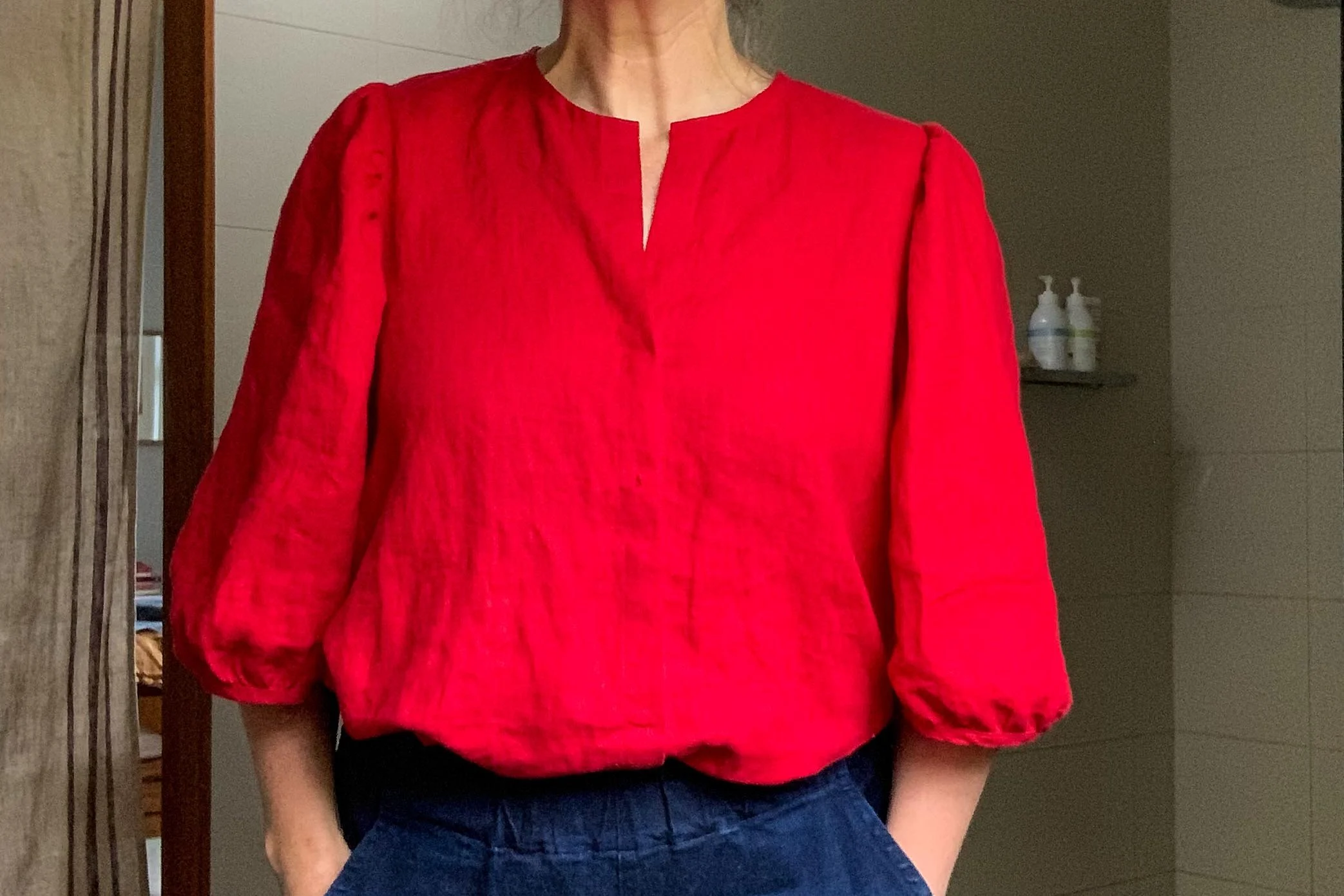My kids craft a fair bit. Not because I am some generous, kind, and nurturing mother, who sits for hours on end with her kids, helping them to create wondrous things. I don't do that. I'm not that patient and I often have stuff to do. Instead they craft because they are surrounded by materials and I give them the freedom and the autonomy to start stuff. And make a mess.
Want to make a bag out of felt for your sister? Sure thing. There is the box of felt, there are the sewing needles. Off you go kid.
Want to dye some yarn? Here is some yarn, there is a jar. You could use onion skins or turmeric or grab some leaves out of the garden.
You want to do some finger knitting? There are the scraps. Off you go. Please don't make a lasso and put it around your sisters neck.
I help when they are trying something totally new. I help when they get stuck. I help when they are making something special as a present, and sometimes I help when they have an especially grand idea.
Occasionally I give some advice on a way of doing something but I always position it that the advice is one way of doing it. Not the only way. I always add that they might come up with a better way.
I want them to get that I don't have the answers, and that they control it, direct it, own it.
So they make stuff.
They don't always finish stuff and that's OK too. Their idea of what is finished and my idea of what is finished are two separate things.
I try really hard to stay out of it. Sometimes biting my lip in the process. Sometimes hard enough to draw blood :). Who doesn't want to control things.
Why do I try so hard to stay out of it? Why do I try not to "teach" them how to do stuff? Because I've seen that they actually have an advantage when learning to craft that we grownups don't have. And I believe that if I were to start trying to teach them stuff then I may kick that advantage right out of them.
Unlike many grownups, most kids - if left to their own devices from an early age - will experiment.
Experimentation and curiosity is how we learn. It's how we developed from apes, to tool-using apes, to upright walking bipeds, to the crazy, big-brained, inventive things we are. Experimentation allows us to be flexible and to run with possibility. Some of my favourite projects have come as a result of experimentation or accident. And for me the learning that comes out of experimentation feels different to the learning that comes from being taught. I feel more connected to it, my understanding is deeper and I retain it longer.
As we get older, our willingness to spend time experimenting seems to fade.
Collecting dyeing materials.
I have a few theories about this. One issue for many of us seems to be that as we get older, we become more time poor and for many reasons, both cultural and personal, we start attaching judgements about our time. The simplest judgement about time is that we need to be productive with it. This judgement is so prevalent (and so culturally strong) that we then lose our natural inclination to experiment. We want results. We want an outcome. And we want that outcome to look like what we imagined. We place narrow parameters around what is a successful project.
And the situation actually gets worse. When something doesn't quite go how we planned it, imagined it, or dreamed it, we assign blame and often translate a projects "failure" into a judgement about ourselves. We say things like "I'm rubbish at ....." or "I'm not patient enough" or "I just wasted those materials" or "I obviously did something wrong ". Blah bloody blah. For some reason we turn the fact that the project wasn't a success into some kind of meaningful message about ourselves.
It doesn't need to be this way as those aforementioned kids show us.
Unconsciously they allow themselves the time and space to just play. Because really they are just having a good time. Figuring it out. For fun.
We could allow ourselves to play, with materials and with time, thereby allowing ourselves the space to fail without it meaning anything. It doesn't need to mean anything. It just means the experiment failed.
Imagine how much more we could enjoy the process if we took the pressure off?
You I know I love an example so here goes....
Over the last year the girls (who were 7 and 4) have been doing some natural dyeing. I need to stress that I actually don't know anything about natural dyeing. It isn't a skill set I currently possess. I've never been to a dyeing class at The Craft Sessions (nor any other class really - a small tragedy of being the event runner :)) and I don't understand anything about mordants and light fastness. I guess the one thing I do know is that you might want to use a mordant and think about light fastness. Obviously I'm not going to be very helpful.
It started about 6 months ago when I showed my 7yo that Belinda had dyed some yarn using plants from our garden and jars. We talked a tiny bit about some of the things you could dye with, before the kid walked out of my sewing room. She got herself a jar, some onion skins, some flowers and some fabric, and chucked them out in the sun. And dyed some fabric.
About six months later the younger kid got it in her head that she wanted to dye some yarn. She was four and she just began. She got jars and avacodo pips and onion skins and purple carrots. Her kinder teacher had just done some dyeing with purple carrots and the kid knew she could get a result.
So she began. She did this awesome kind of solar dyeing that we think we made up. We did solar dyeing without sun (as it was the middle of winter) by putting the jars on top of the hydronic heaters. This meant that the jars heated up during the day and cooled down at night. I made up mini skeins of scrap yarn for her and she went for it.
She decided when they were finished - sometimes she left them for two weeks, and other times she left them for two days. I didn't say anything. I simply gave her some bowls and some tongs and told her to rinse them and put them on the heaters to dry.
She ran with it. She got results with her first round (which I will show you another day) which she totally loved. She then came to me asking what else, and so I told her I thought that sour grass (oxalis) worked, and turmeric, and black beans, and so on we went.
Making the mud.
Then not long ago, I met the very knowledgable and kind Samorn from Eastern Weft, and she told me that to get the black yarn they use in their weaving they dye using mud. I told my girls this, and so they found some dirt, made some mud, and put some yarn in it. They left it for a few weeks before trying to rinse it outside by the tap.
There were some issues. Firstly it was impossible to get all the mud off the yarn. And secondly, the yarn was still white. The mud washed off and left the yarn the same colour as it started. *
Rinsing the yarn a few weeks later.
The final "result".
And do you know what they did? Literally they shrugged, walked inside and got another jar some more yarn and some gum leaves.
That was it. I don't think they gave it another thought. There was no sadness about wasted time and materials. There was no judgments about their abilities with natural dyeing.
The other interesting thing about it, is that while they like the yarn they have dyed, and want to play with it, they don't seem to consider it as a precious/amazing resource that they should use carefully and sparingly.
Personally if I had dyed yarn then I would be endowing it with some kind of "specialness". I would consider carefully how to best use it and probably get frozen in indecision. I might just leave it sitting there because of it's preciousness.
The girls don't think anything of randomly using it for a collage, or cutting it up to make bracelets and finger knitting. They have used it to make a leash for a stuffed toy dog. I have to bite my lip and smile admiringly at their creations.
It is their process, not mine. And I learn so much from watching it.
Are you still an experimenter? Were you ever?
Felicia x
*Samorn has since told me it is a special kind of mud.












